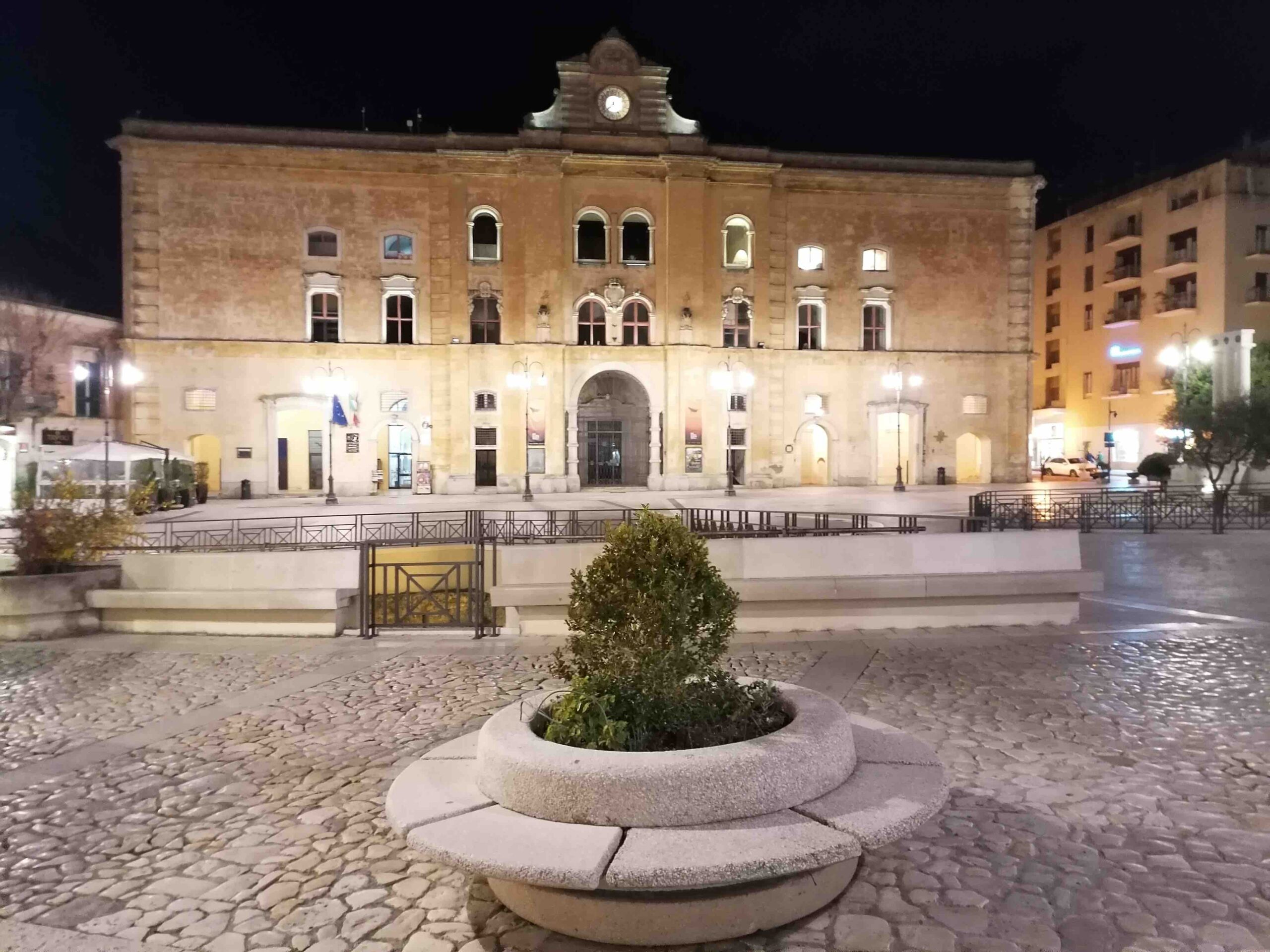Matera movie tour
Matera like Jerusalem
From Matera, the set of film sets, begins a journey of discovery of the most evocative locations chosen by the great international filmmakers. The “manger of miracles” is unveiled by the directors who staged their story of Jesus Christ in those places that are so symbolic of the centuries-old city: The Gospel according to St. Matthew by Pier Paolo Pasolini (1964), King David by Bruce Beresford (1985), The Passion of the Christ by Mel Gibson (2003) and The Nativity Story by Catherine Hardwicke (2006). The tour covers all the most important sites of the evangelical narrative: spaces and places that on the silver screen have revealed all their splendour, delighting our eyes and moving our hearts.
Via Muro
Panoramic, stunning, spectacular. Via Muro is the starting point of the tour on the Passion of Christ which has hosted the great directors Mel Gibson and Catherine Hardwicke. In the film The Passion of the Christ, Via Muro is the place on the Way of the Cross where, in the midst of his Calvary, Jesus begins his journey towards his destiny. Although he denies it, Mel Gibson allowed himself to be inspired by the great Pier Paolo Pasolini who had previously chosen Matera for its similarity to Palestine. The maestro and poet, who inaugurated biblical films in the city of the Sassi, chose instead Via Lombardi to film the scenes of the Way of the Cross. A road where humanity and spirituality blend together, leaving space for the imagination and the unending horizon of Golgotha. In her film on the Nativity, Catherine Hardwicke designed a set around the spectacular flight of steps in Via Muro with a great door, exotic palm trees and stalls for the sale of wares, turning it into a meeting place and market for the inhabitants of the village. Via Muro stretches as far as the ancient quarter of Civitas, where the cathedral arises majestically, with Piazza San Pietro Caveoso, where the church of San Pietro Caveoso stands, towering above the canyon. Here along Via Muro is where the Prince’s stately home was set for the American remake of “Ben Hur” (2015).
San Pietro Caveoso
Piazza San Pietro Caveoso, immortalised by great directors both Italian and foreign, was a location chosen also for other stage sets, by the Taviani brothers in their masterly film Il Sole anche di notte (1990), by Giuseppe Tornatore in L’uomo delle stelle (1995) and by Ferdinando Arrabbal in the film L’albero di Guernica (1975). Piazza San Pietro Caveoso was also used as the setting for the entrance to the Roman Camp of Jerusalem in the film “Ben Hur” (2015), as well as for the outdoor market, rich with spices, urns and ancient braziers in the film dedicated to the super hero “Nightingale” (2016).
Malve District
At the back of Piazza San Pietro Caveoso you go towards the Malve Quarter, an evocative film location where, in the Hol- lywood director Gibson’s film, the commercial activities of Je- rusalem are carried out. Stalls, exotic plants and utensils, jugs and furnishings of the time decorated the set of the ancient marketplace and the homes of Jerusalem. The place has a wealth of interest and history, and amidst the rock churches and deep caves, the tribulations of the film King David were also set. And the collosal American film “Ben Hur”.
Porta Pistola
The crossroads between the Sassi and Porta Postèrgola, better known as Porta Pistola, looks over the spectacular gullies of the canyon where the Gravina river flows.
The place, chosen by both Pier Paolo Pasolini and Mel Gibson, represents the Gates to the city of Jerusalem, the Holy Land, prepared with a monumental set design characterised by Ara- bic-style architectural elements.
Madonna delle Virtu’ and San Nicola dei Greci
Just a few steps away from the Gates of Jerusalem arises a marvellous rock complex: Madonna delle Virtù and San Nicola dei Greci where the scene of the Last Supper was filmed in the Hollywood epic.
Words of love alternate with blood and nails, the Lamb of God takes away the sin of the whole of humanity before the cross is planted in the ground and raised on Golgotha, in Murgia Park, for his death and Resurrection.
Murgia Park
Murgia Park, with its natural, historical and ecological patrimony, is of exceptional value on a universal level. Beyond the canyon, like an island, it bursts into space without boundaries or obstacles. The scenery speaks of human tribulations from the very origin of life until our times, and its immense landscapes have inspired directors and writers. It was in the area of San Vito that Pier Paolo Pasolini decided to set the scene of the Holy Sepulchre and the appearance of the Archangel Gabriel. In The Passion of the Christ, on the other hand, the life of Jesus as a child is depicted, in an intense and mystical flashback, in one of the rural buildings of the area, Radogna Farm.
Also Catherine Hardwicke reconstructed the village of Bethlehem in the Murgia Park – in the rock church of San Pietro in Princibus – and, in Selva Venusio, the village of Nazareth. Full of spirituality, it was also used for the set of the film “The Young Messia” (2015). Used as the setting for the place where Morgan Freeman’s character was imprisoned in “Ben Hur” (2015), the Park of the Materan Moors was also immortalized in some of the adrenaline-filled scenes from the film “Veloce Come il Vento” (2016). It was also here that Amazon women galloped on horseback, set against the backdrop of the Moors, not far from the church of the Madonna delle Vergini, from the film “Wonder Woman” (2016).
Golgota
It is in Murgia Timone that Golgotha rises. Evocative and mystical, it was the setting for the Crucifixion scenes in the films of Pier Paolo Pasolini and Mel Gibson.
The Golgotha prepared by Hardwick sees the crosses as representing the death sentence of the time. Golgotha is the last stop in Matera on the biblical theme movie tour which leaves, in the eyes of the spectators, the enchanting images of the manger of miracles.


















